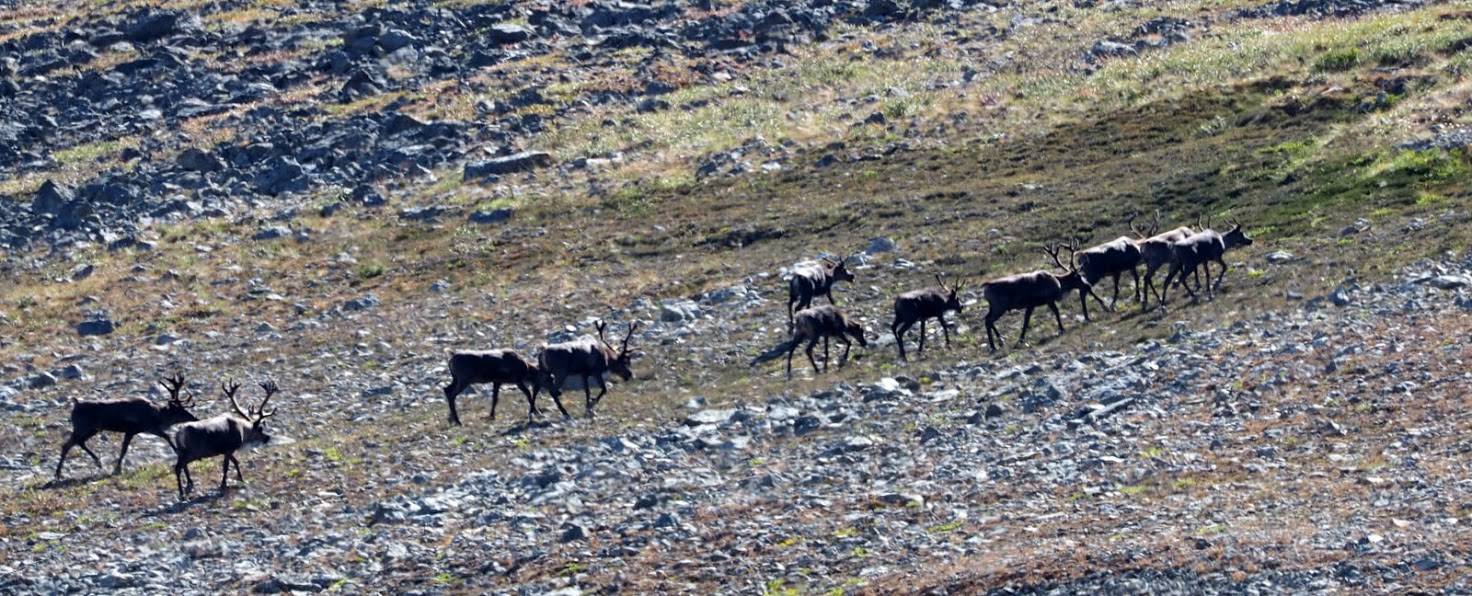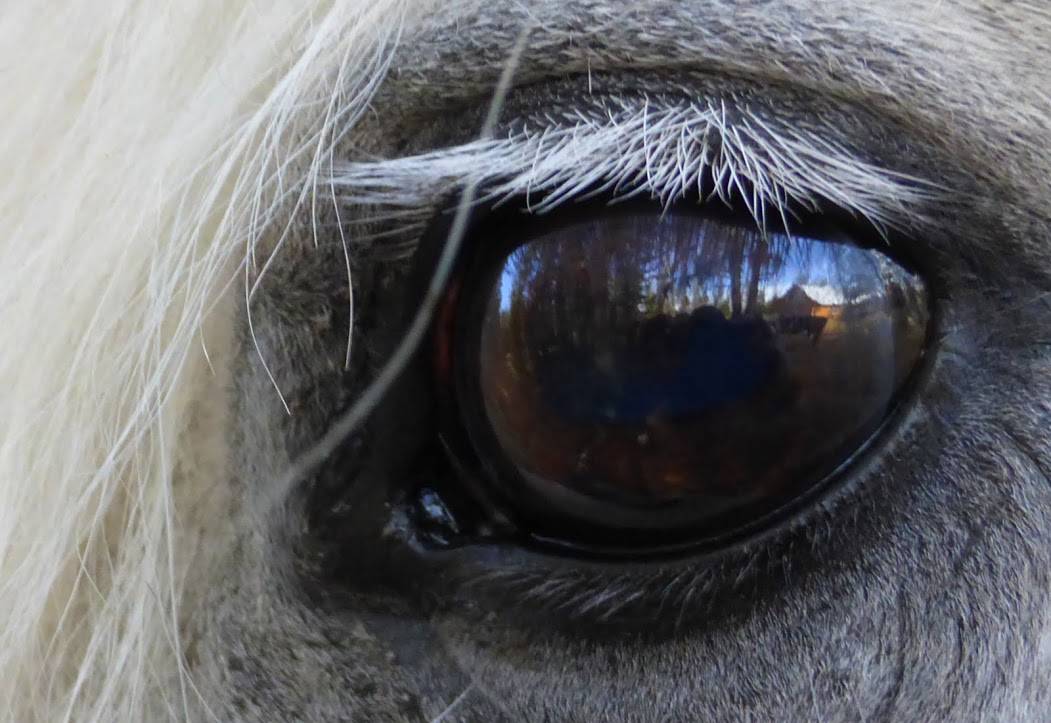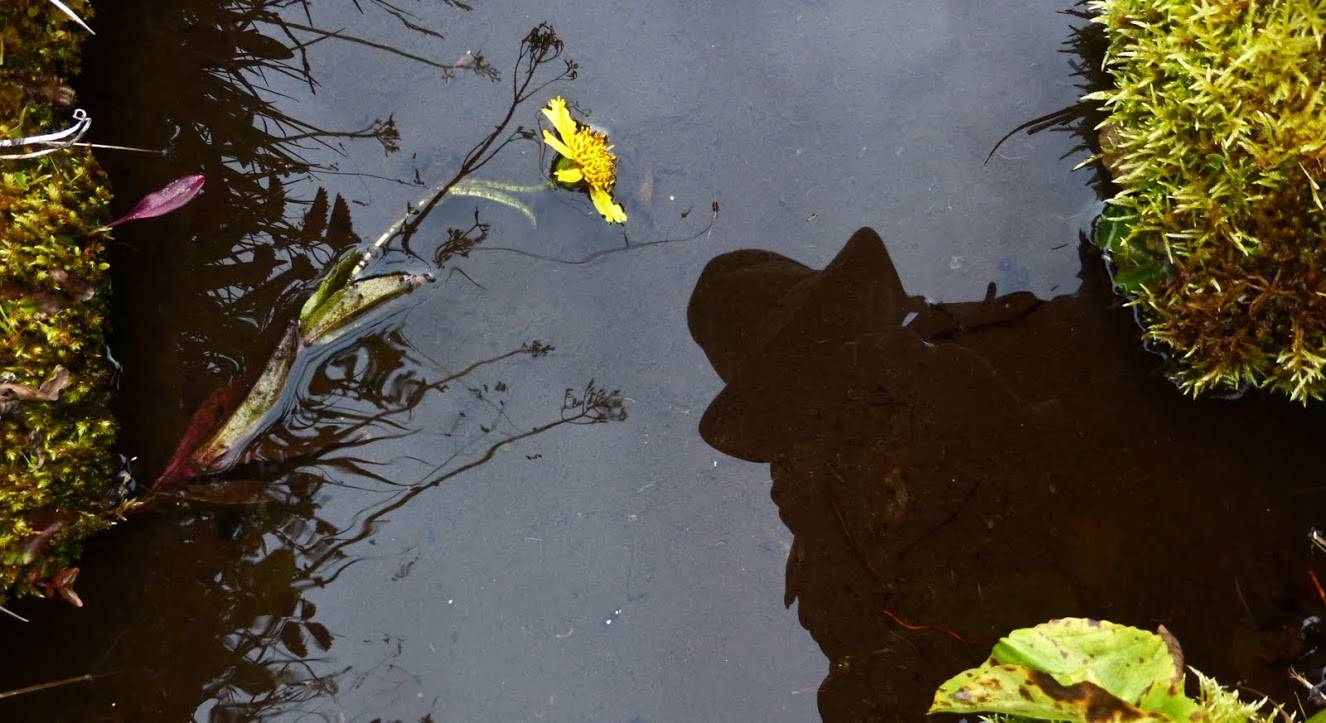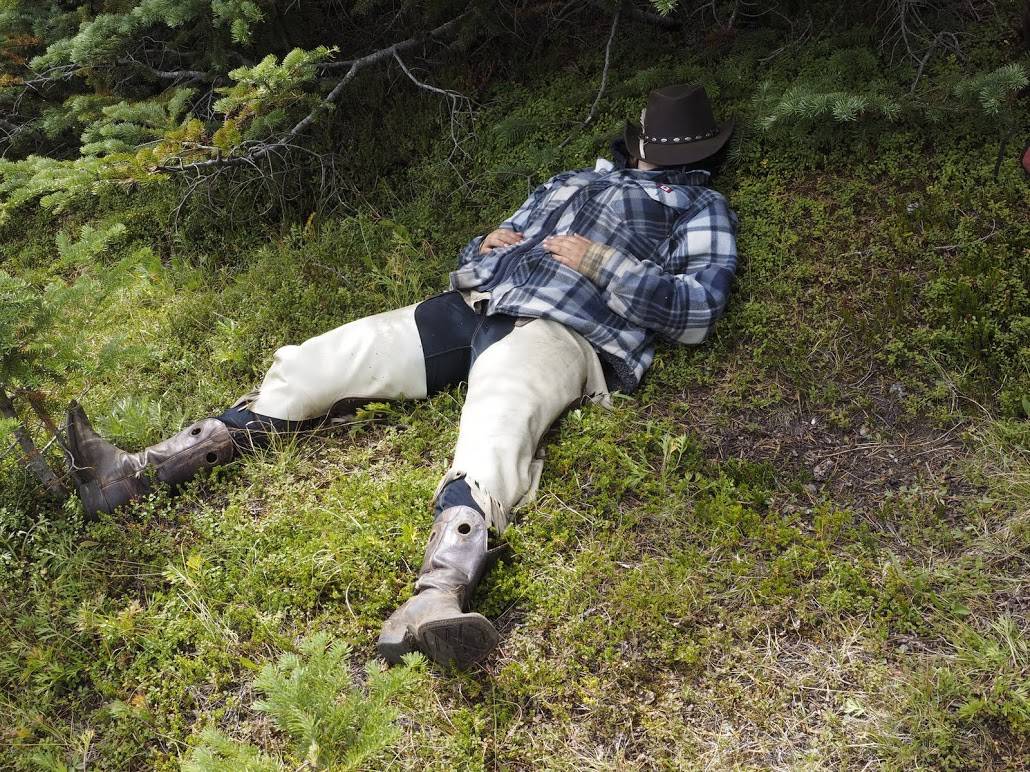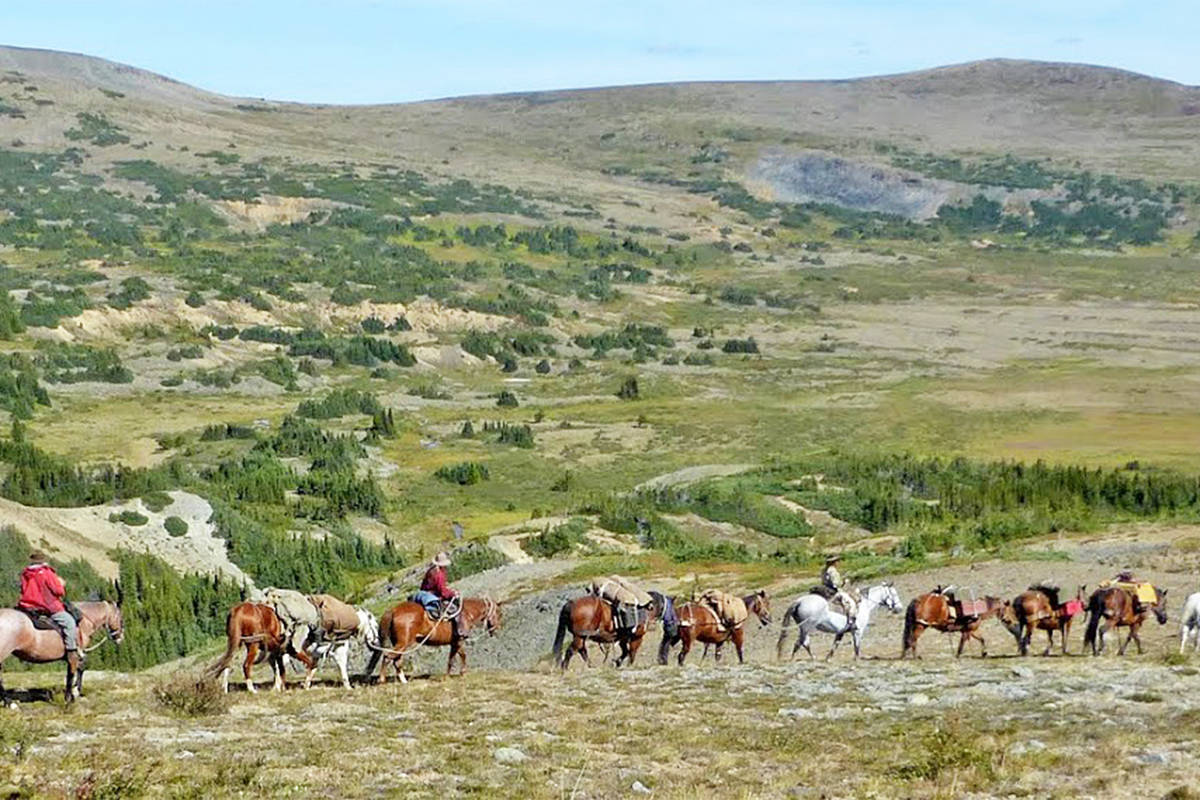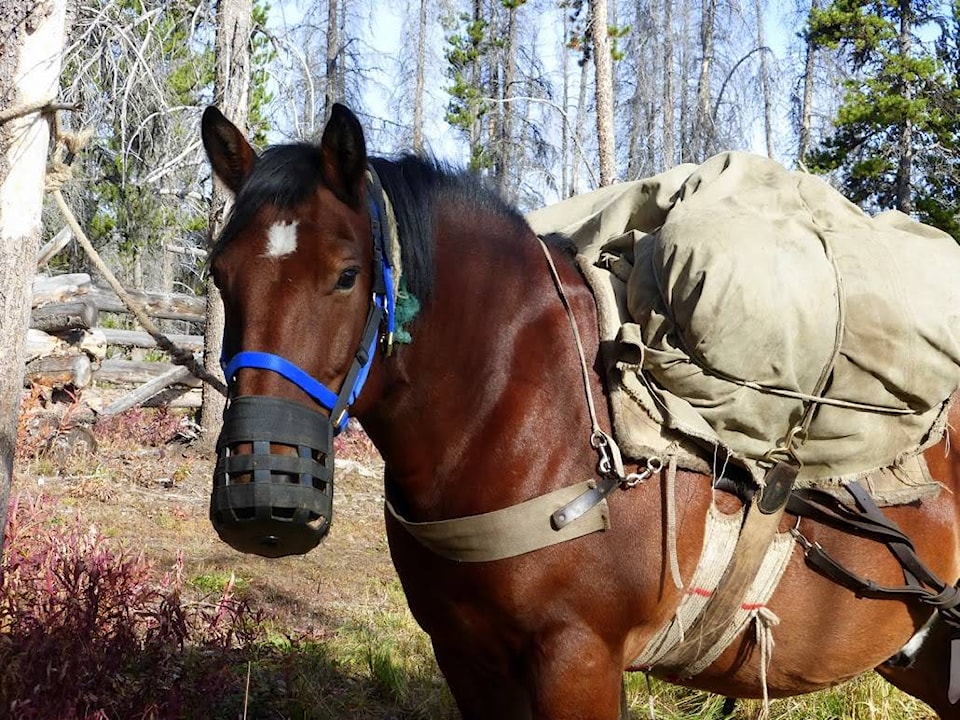Itcha-Ilgachuz Mountain Outfitting has been taking guests on horseback into the remote wilderness of the West Chilcotin for about 40 years.
Owners Roger and Wanda Williams, along with their daughter Terra Hatch, said what started as a few trips here and there in 1978 and 79 became a business by the mid 1980s.
They take guests into Itcha Ilgachuz Provincial Park where there are two mountain ranges — Itcha and Ilgachuz — that are remnants of ancient shield volcanoes.
“They are two very distinct mountain ranges, both beautiful and unique,” Terra explained. “Both are quite horse-friendly. While you still have the high country and the alpine, you can get pretty much anywhere you want to go on the back of a horse, especially in the Itchas. The Ilgachuz are tougher, but it’s still relatively easy horse country, compared to, say, the Rockies.”
Read more: Column: Bucket list filled with mountain experiences
Many of their guests come from the Williams Lake area, some from other places in B.C. and Canada, and they have a few foreign customers, Wanda said.
Trips average 10 days long, with the shortest ones being seven days. Often there is a fly in food drop part way through the trip, depending on the route. About every second year they do a 16-day trip, which wanders through both the Itcha and Ilgachuz ranges, with a stopover at the Pan Phillips Fishing Resort in the Blackwater area.
“Our rides are set up so we travel for one day and then set up two nights at one camp,” Terra said, adding it’s a rhythm that makes it a lot more pleasant because it’s a lot of work for everyone to pack up. The day rides can be a bit shorter if the guests choose, or some even decide to stay in camp.
Riding time per day averages about five hours, with always a stop for lunch and a cup of coffee or tea.
“We need to get to the next camp, but it’s not an endurance test,” Terra said, adding all the camps are based around available horse feed.
Wanda does not remember a time when she was not riding horses.
“I was being packed on the front of the saddle as a little person. It was the same for our kids.”
It’s the personality of horses she likes, she added.
“You get attached to them. They have certainly been a huge part of our lives and a tool for what we like to do.”
Her late father, Lester Dorsey, moved to the Anahim Lake area in the 1920s from Washington.
Her mom, Mickey Tuck, was a teacher who worked throughout the Cariboo Chilcotin, including Williams Lake, so when Wanda needed to go in for high school, she was able to live with her mom.
Exposed to horses for as long as she can remember, Wanda said her dad loved horses and working with them.
“He spent a lot of time horseback. He guided surveyors, packed for the Hudson’s Bay Company, did big game guiding, and a small amount of trail riding. Of course back then horses were also the main means of transportation and putting up hay. He ran about 100 head. Roger and I got into the more straight trail riding.”
Originally from Illinois, Roger moved to the area in the early 1970s to work at the Tatla Lake Ranch and met Wanda.
Terra’s husband, Eli Hatch, grew up in Tatla Lake.
Usually they run about 50 head of horses, which Wanda said might seem like a lot, but they have to have 25 to 30 head available for each trip so they need the numbers to maintain that many working horses.
Predominantly they are Quarter Horses with some draft mixed in as well.
“For the most part, they are a cross. We do have a registered Quarter Horse stallion that we breed with our bigger mares, but we purchase a few outside horses too,” Terra said. “There’s not a breed specifically, just a type of horse that is kind, strong, sure footed and level-headed. It’s more a type than a breed. Being able to use the horses on the ranch really helps get them well use to working in the rough country.”
All the food is provided on the trips, with meals prepared ahead of time as much as possible.
“I think we eat better in the mountains than we do at home,” Terra said, praising her mom’s abilities as a cook. “People are always surprised at how much food there is — mom’s a magician at pulling meals out of the pack boxes. Pretty much everything is fresh. The food is outstanding and I always look forward to eating in the mountains.”
Viewing wildlife on the trail is a given, they said.
“It’s almost a 100 per cent chance of seeing caribou,” Terra said. “Definitely the numbers are less and less. We don’t see moose because the pack train is too noisy. Occasionally the first two people will see one, but they don’t stick around.”
There’s a “healthy” herd of mountain goats in both mountain ranges, and always wolf tracks present in more recent times, Wanda added.
Caches aren’t needed to keep food away from bears, but it’s important to be careful.
“We see signs of bears, but rarely see them. Bears turn tails and go the other way when they smell us coming — knock on wood, it’s never ever been a problem in these mountains,” Terra added.
Wanda said there is less traffic in the mountains now than there was in the past.
“I think mostly because people with their backyard horses don’t venture that far anymore,” she added. “We used to run in to smaller outfits quite frequently, but rarely see anyone anymore. People used to ride over from the Quesnel area for the rodeo every year, but that hasn’t happened for a long time either.
Kris Andrews, a retired pollution biologist from Williams Lake, first rode with Wanda in 1985.
Read more: Boaters asked to be mindful of Scout Island restrictions
“It was wonderful,” Andrews said, noting she has done so many rides since with Wanda that she has lost count.
“But I never tire of seeing this amazing country with its caribou herds and upland game birds, volcanic geology and much more. Wanda and her family are so familiar with these mountain parks and their outfit is the best. The food is wonderful as is the comradeship with other guests.”
Andrews likes the limited size of the trips and said the maximum number of seven or eight per trip is perfect for travelling, eating, riding and all the rest.
She also likes hearing the family history in the Anahim Lake area that is shared to the delight of the guests around the campfires in the evening.
“Once on one of our early ladies trail rides we were amazed to see three different caribou herds come down off three separate mountain ridges with their new calves and feed and rest in a basin below our viewpoint,” Andrews said. “What a splendid sight to see. We counted 600 animals that day.”
Sadly, Andrews said, on the last trip they saw a herd of 140 animals and no calves right when the females should have had their calves at their side.
“I don’t think there are many other places in B.C. where one could see this many caribou, but the logging, climate warming, pine beetle, fires and changes to the ecosystem are impacting the population numbers here too.”
Andrews also took three BC Bird Atlas trips into the Itchas and Ilgachuz with Wanda and Terra, she said.
“We found and recorded many breeding birds in these mountains including the American Golden Plover and the Grey Cheeked Thrush, which had not been previously recorded breeding in the Cariboo Chilcotin.”
news@wltribune.com
Like us on Facebook and follow us on Twitter
